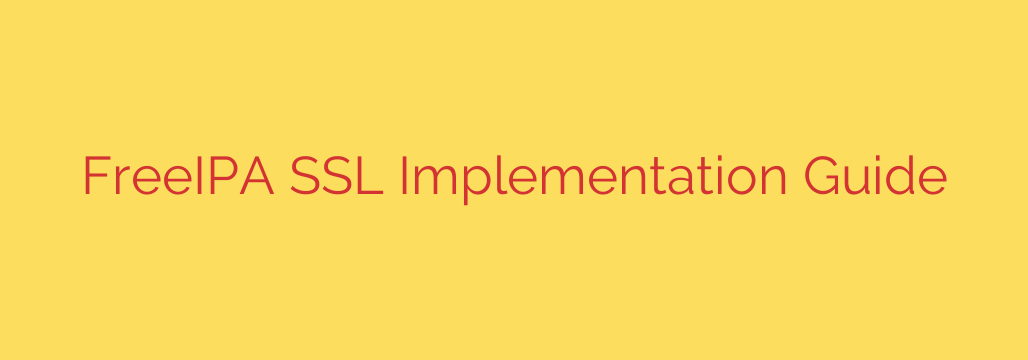
Implementing SSL/TLS is essential for securing your FreeIPA environment. This ensures all communications, including web access (HTTPS), directory lookups (LDAPS), and Kerberos operations, are encrypted and trusted. Proper certificate management is key to maintaining a secure identity management infrastructure.
The first step is deciding on your certificate authority (CA). You can use FreeIPA’s internal CA, which is suitable for internal clients configured to trust it. Alternatively, you can obtain a certificate from an external CA, such as a commercial provider or Let’s Encrypt, especially if external access or widespread client trust is required without manual CA distribution.
Regardless of the CA choice, you’ll typically need to generate a Certificate Signing Request (CSR) on your FreeIPA server. This request contains information about your server (hostname, organization, etc.) and includes your public key. The private key is generated alongside the CSR and must be kept secure on the server. Tools like ipa-server-certinstall or manual OpenSSL commands can be used for this.
Submit the generated CSR to your chosen CA. They will verify your request and issue a signed server certificate. You will receive the signed certificate file(s), potentially including intermediate CA certificates.
The next crucial step is installing and configuring FreeIPA to use the new certificate. This involves importing the signed certificate and its corresponding private key onto the FreeIPA server. The ipa-server-certinstall utility is the recommended way to handle this, as it correctly places the certificate and key files and updates the necessary FreeIPA and underlying service configurations (like Dogtag, Apache, 389 Directory Server, KDC). You will need the path to your signed certificate file and potentially the intermediate CA certificate chain file.
After installing the new certificate, it is mandatory to restart the relevant FreeIPA services to pick up the changes. This often includes ipa.service or individual components like Apache (httpd), 389 Directory Server (dirsrv), and the Kerberos KDC (krb5kdc).
Finally, verify the SSL/TLS configuration. Access the FreeIPA web UI via HTTPS (e.g., https://your.ipa.server), and check the certificate details in your browser to ensure it’s the correct one issued by your CA and that the connection is secure. You should also test LDAPS connectivity.
Remember that certificates have an expiration date. Implement a process for certificate renewal well before expiration to avoid service outages. The renewal process typically involves generating a new CSR, getting it signed, and installing the new certificate, followed by a restart of services. Maintaining a secure and trusted FreeIPA environment relies heavily on diligent SSL/TLS certificate management.
Source: https://infotechys.com/implementing-ssl-on-freeipa/








